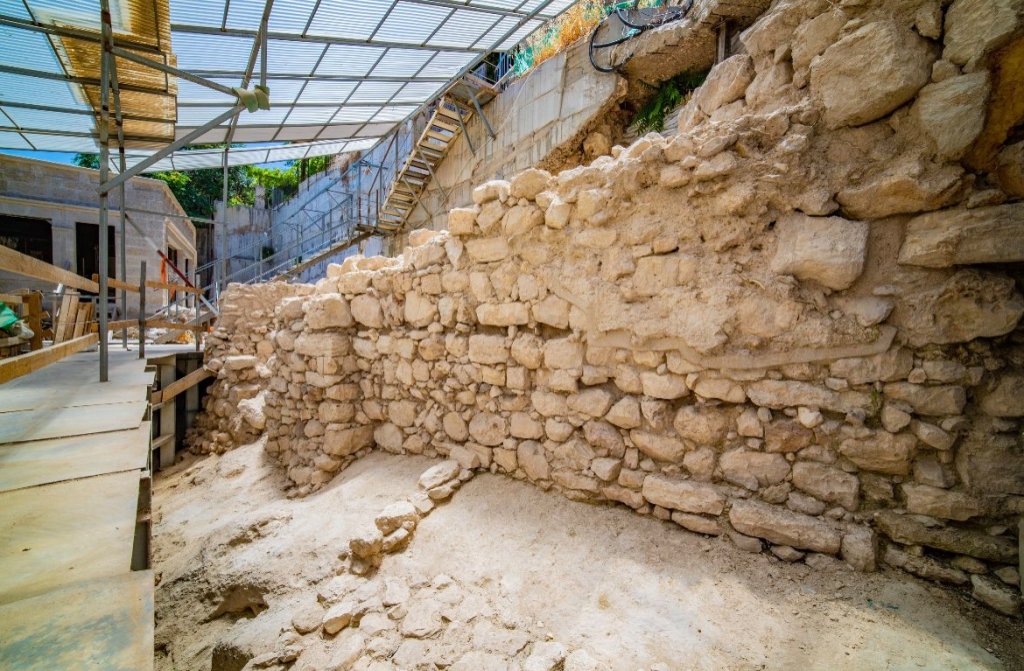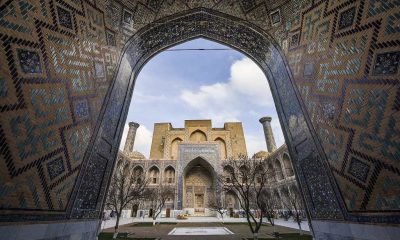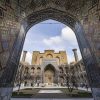ART WORLD NEWS
Remains of 2,700-Year-Old City Wall Discovered in Jerusalem
Archaeologists have uncovered a missing section of Jerusalem’s original Iron Age fortifications that were built at least 2,700 years ago. Most of the wall would have been destroyed during a Babylonian invasion in 586 B.C.E., according to the Israel Antiquities Authority (IAA), which announced the discovery this week.
A wall segment on the eastern slope of the City of David National Park, dating to the First Temple period (roughly the 8th century B.C.E.), was discovered last week in an excavation led by Dr. Joe Uziel and Ortaf Kalaf of the IAA and Dr. Filip Vukosavović of the Ancient Jerusalem Research Center.
The wall fragment is one of the only remains to survive from a deadly military campaign by the Babylonian king Nebuchadnezzar, who sacked the city and destroyed the famous Temple Mount.
Related Articles
In a video published by the IAA explaining the find, Dr. Uziel said, “The Babylonians arrived here in 586 B.C.E. and destroyed the city of Jerusalem and the First Temple,” adding that “they did not destroy this segment of the wall, which remains standing until today, waiting for us archaeologists to come and expose it.”
The section links two previously discovered segments, which provides further proof that Jerusalem was fully walled before the Babylonian conquest. “Now we can reconstruct 200 meters of the city wall that surrounded the eastern slopes of the City of David and Jerusalem,” Dr. Vukosavović said in the video. The team also uncovered the remains of a partial building just inside the wall.
Artifacts recovered during the excavation of the adjacent building include a bulla, or clay seal, inscribed with the name “Tsafan” in Ancient Hebrew, as well as a Babylonian stamp seal that depicts a figure in front of the ancient Mesopotamian gods Marduk and Nabu. Marduk was the most important god in the Babylonian pantheon at the time, considered the patron deity of the capital city, and Nabu was his son, the god of wisdom and writing.
Broken storage jars were also discovered, with handles bearing a variety of stamped designs—some with “Lamelech,” meaning “For the King” or “Belongs to the King,” while others feature a pattern of concentric circles or rosettes. It is unclear how the storage jars and seals arrived at this location and from which time period the objects originated, as the wall was later used as building foundations.
“During the excavation, we found a number of very important items, which testify to [the] daily life of ancient Jerusalem,” Vukosavović said. “This teaches [us] about Judean bureaucracy [and] administration, from sometime in the 8th century B.C.E. until the Babylonian destruction.”
The archaeologists will conduct radiocarbon dating to confirm the age of the wall, and determine whether it matches the dates of the two previously unearthed sections, which were originally built in the 8th century B.C.E. Their findings will be presented at the IAA conference in October.











